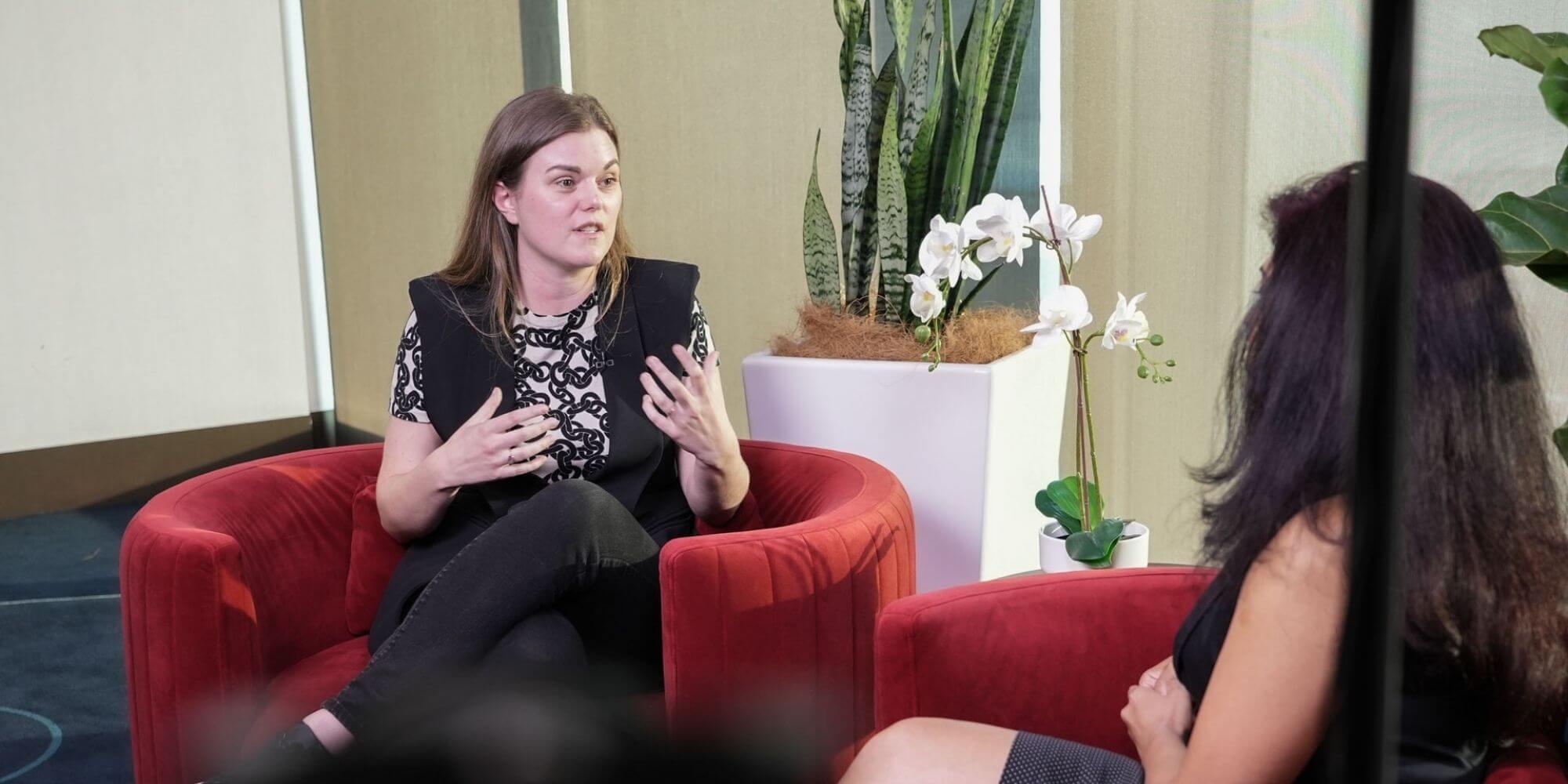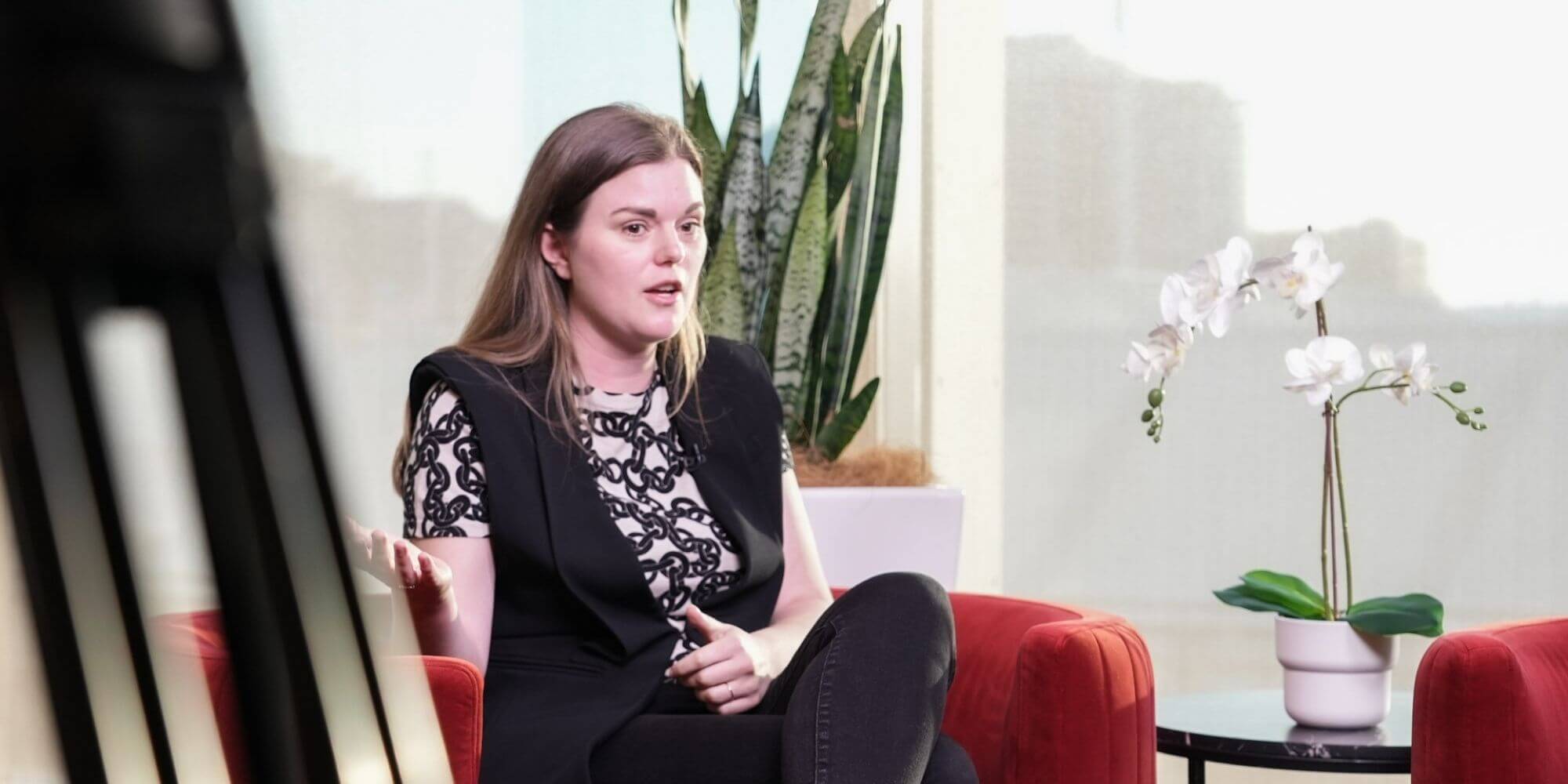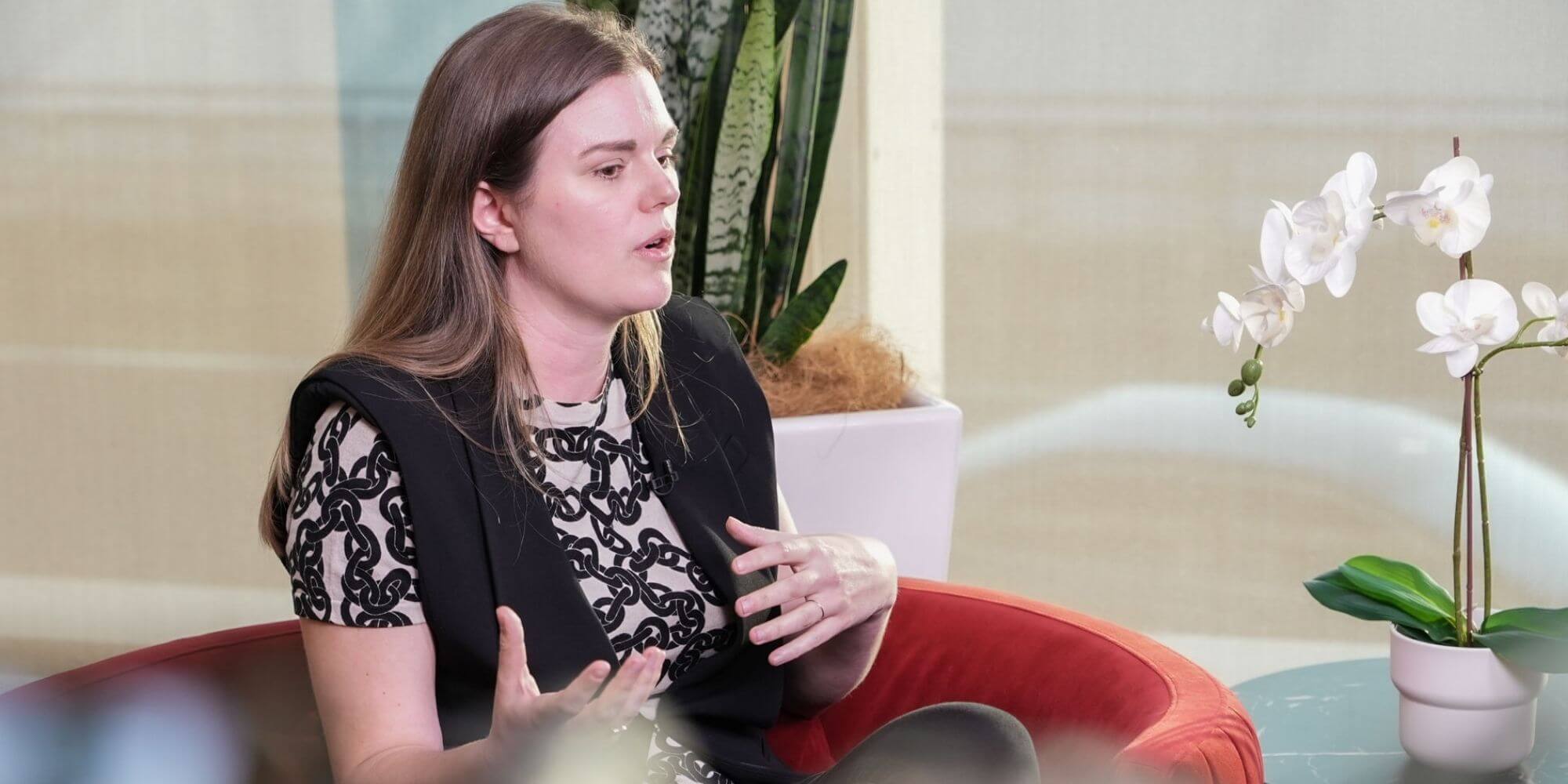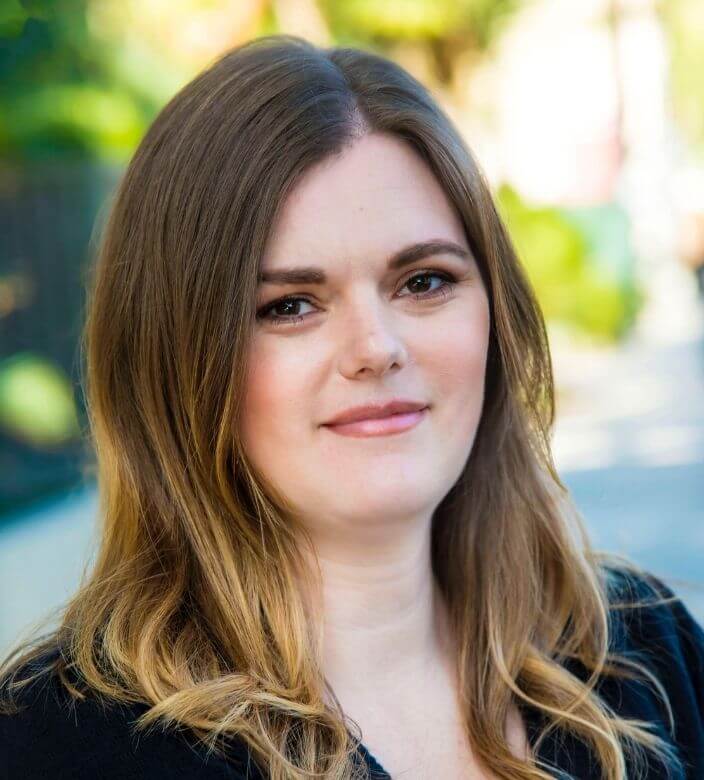In the lead up to the gathering of 130 Heads of Digital Transformation and CX at Digital Edge, NOBL Collective’s CEO, Lucy Chung, speaks with ADAPT’s Senior Research Strategist, Aparna Sundararajan, about the methodologies NOBL Collective are using to augment processes to streamline delivery of business outcomes.
Rather than working with clients based on roles, Lucy explains how NOBL’s change management services are personality and motivation-based.
Aparna shares a wider perspective from ADAPT’s Digital Edge events, hosting hundreds of CXOs yearly, where personality trends are found for each role. She also explains how reporting structures amongst these executive peers are shifting.
By fostering psychological safety, risk-taking, and trust, Lucy Chung ensures organisations are set up for performance and success. Positive and agile methodology underpins the way NOBL Collective evolves organisational design and new ways of working.
When leadership fails to dedicate the resources for delivering business outcomes, ADAPT research reveals that this can severely harm organisations’ ability to attract and retain talent.
Aparna Sundararajan:
Finally, it’s great to see you in person after doing three sessions with us at ADAPT. Starting with CIO and then security and now with the Chief Financial Officers.
And you will also be speaking at our Digital Edge in a month.
You worked with many kinds of personalities, different departments I’ve always been interested in understanding. Is it role driven, or is it personality driven? When we talk about change management, what have you seen?
Lucy Chung:
It’s such a good question. I would be curious. I’ll give you my sense. I’ll be curious to hear from you because you’re looking at more of the aggregate, whereas I run a small consultancy where my experiences will be quite specific to the clients that we happen to have worked with.
However, we do try to look at industry and persona. I’ll be curious to hear if what I say resonates with what you’re finding in your research.
Personality more than role, or I would say motivation. That’s related to personality. Some leaders and organisations are self-selecting into wanting to change and wanting to transform a core competence.
What we do at NOBL is to insource change as a capability. When we’re doing our work, we’re looking to be coaches on change.”
That’s why we talk a lot about resistance to change and navigating change because we want our clients, both the organisation and the humans that we’re working with, to be phenomenal wayfarers in change. Because change is inevitable, change is ever-enduring. It is the only way to ensure that they don’t get disrupted by the external and the forces.
Whether it is market threats or be it existential threats, or what we’ve just experienced in the last year and a half, that was not a market threat. That was an existential threat, and societal challenges came into play with that.
How different countries and societies dealt with what was an existential threat. I’m in Australia now, having just come from the States. It’s a very different response to the pandemic.
When it comes to leaders who champion for change in our experience, leaders are ready for that and understand the mindset required to transform their core competence and change their capability.”
There are others that it just takes a bit longer on that journey to get there. We work with the whole spectrum. We work with leaders who have not yet embraced how important that aspect is. Maybe we start with an engagement that looks a little bit smaller.
It could be more around learning and development or leadership development or coaching versus organisations we work with that we’re doing a massive change management remit. I would say that’s why our client’s range. We’ve worked with CIOs, CMOS, CHROs, CEOs. It ranges. We don’t have one person who buys our services.
Which I think speaks more to the fact that its personality, behaviour, motivation led and less about our offering. It’s not like we engineered it that way. I think that’s just what’s ended up playing out organically.
Aparna Sundararajan:
That’s very interesting. With the ADAPT community, what we’ve seen is a different personality by designation and role. We host Chief Financial Officers, Chief Digital Officers, Chief Information Officers and then Chief Information Security officers and this year. We will host CHROs and Chiefs of Data.
This is such a broad spectrum of people, and they all have a specific job to do.
If you’re applying your brain to a certain outcome every day for eight hours, irrespective of your personality, you somehow imbibe some of the culture and requirements of a job role.”
For example, what we see is say that CFOs would be accepting, or they would get onto the change if it’s having a direct outcome or impact on the business. It’s just that linear equation for them.
While for CIOs, because they are pulled in many directions from different departments, they’re often just from a job function they don’t know what to do are highly introverted people. If someone tells them what to do why to change, they will. Just from a job role perspective, I think they are very, very limited, and they’re constrained. They’re very constrained. While again, Chief Information Security Officers right now they’re not pulled in different directions.
It’ll probably be easier for them to bring about that change rather than lead change.
A lot of CIOs are starting to lead change, while CISOs are not leading change. From our perspective, we do see differences in personalities by the role.

Lucy Chung:
By the role. How do you delineate for you all in your research Chief Digital or Head of Digital versus CIO?
Aparna Sundararajan:
The Chief of Digital usually has the P&L responsibility for front-end digital commerce sites. They have that specifically in their role.
They are mostly carrying out the digital transformation on the front end to product development or acquiring and retaining customers, while CIOs are hardcore built into the back-end infrastructure of the business.
The traditional IT and the modern IT hardly very less, they’d probably partner with Chief Digital Officers to programme solutioning. In service of those and even advising on which technology to go for, they wouldn’t necessarily build that strategy.
Lucy Chung:
And in this market, are you seeing CDOs reporting to the CMO or CEO, or how’s that been shifting over?
Aparna Sundararajan:
It’s interesting because CMOs within Australia, New Zealand, if I must compare it with North America, it’s not at the pace, or it’s not at the same place when you say Chief Digital Officers are directly reporting to CEOs.
Lucy Chung:
That’s interesting, okay. That’s helpful context. I am going back to your point about priorities. When I hear that what my brain says or what the story that I hear is silos.
While I think you’re right that we see that play out, CIOs and CFOs are given very quiet distinct remits in how they’re expected to go about this strategic change and what needs to happen within the organisations. Absolutely, the ROIs they see are different.
The way they’re being measured is different when we come into an executive team, and we see that that’s something we look to dismantle.
We’re hoping in that situation that the CEO or even the board is up for the challenge of breaking down how differentiated those priorities are and getting them all to speak some of the same languages.”
And I think what’s interesting about some of these roles of the Chief Digital Officer is that they sometimes are the tie that binds. Sometimes they come in with this very broad but forward-facing worldview and figure out how to get the whole room thinking about experimentation similarly or galvanising them about what the future might look like.
Often it’s the CEO who says in this a more enlightened way. I think my executive team needs to work together, and we all need to be looking at the same priorities and similar ROI. They may pick off several key performance metrics or several ways of measuring success that lives within different departments.
The CFO might be responsible for looking at a couple of those metrics, where the CIO might be responsible for looking at a few of them, but everyone is on that same page. That’s when we’ll see the personalities come into play.
Where it’s less about that role because it’s this high performing team suddenly and like I talked about in my talk is those important factors like psychological safety and risk-taking and trust.”
Those other pieces are just driven more by those personalities or motivations or behaviours or sense of self these kinds of things that we don’t often talk about in workplaces but are critical to a team’s performance and success.
Aparna Sundararajan:
That’s a very important and interesting point you mentioned, Lucy. To get them out of their roles to truly see their personalities. Have you had any interesting experience on using gamification or a different activity to get that done?
Lucy Chung:
One of the harder parts of the job is getting many executives that have existed in silos to working truly as a beautifully performing high performing team. We don’t do exercises that sit well outside of the existing work.
Our work is about augmenting practices, processes, and experiments that directly serve business and strategic objectives with just a new way of doing them.”
We may come in during strategic planning or budgeting and reframe how they’re thinking about their big goals or their bets. We don’t even call them goals anymore.
We’ve been rebranding them as bets because this future is uncertain that really, you’re not setting definitive goals. You’re making a bet about what might serve you in the future. Getting that executive team together and just doing what they would have been doing in their humdrum normal day to day but looking at it with a revitalised lens.
That’s why we use positive psychology and org psychology, and agile methodology.”
We’ve adapted many of those modalities and come up with simple frameworks for doing this work in a fundamentally different way. Hopefully, it does feel like a game I would love when the teams we work with really do enjoy it.
That’s how we look to cohere that group and develop that group as a team is looking for those existing processes and improving them. New ways of working and org design in service of that and that’s always interesting and little things like it seems little but often, for example, when goals are set, and I’m curious if this comes up in the research at all.
Goals are set, the whole announcements made. Everyone’s aware of the remits for the coming year, the revenue goals, be it whatever the goal is. We’re going to roll out this, and then the step of resourcing against that is never done.
Aparna Sundararajan:
Yes, never; it’s just assumed.

Lucy Chung:
It’s just assumed that everyone will fill in the holes.
There isn’t a long and intense and important conversation about what’s going to take, how much time, how many humans, how much cross-functional collaboration?”
And that’s where that newly coherent executive team that’s high-performing now comes together and says, “This is going to require these multiple cross-functional meetings this new cadence for us, these new sets of meetings that are going to allow us to hit that goal. I’m going to have to bring in these other three folks from this other area of the organisation because this is going to require a different allocation of resources than I’m used to.”
Things like that right where these like seemingly simple little steps that will come in as this external brain and say, wait, wait, wait, wait, we’ve missed this piece of the process. Let’s help facilitate that.
Aparna Sundararajan:
And probably that’s why change management becomes hard because that’s when the employees think you do not think about me. You just committed and promised, but no one asked me if I have time right now or my next month is done. It is planned.
Lucy Chung:
It’s busy. It’s already super busy.
Aparna Sundararajan:
How do I prioritise? It’s very well removed from reality. Since you asked about the research…
Lucy Chung:
I’m curious if that comes up. I saw resourcing and talent acquisition, and talent retention in some of the research we looked at today.
Aparna Sundararajan:
Again, from an executive point of view that it’s very hard to attract and retain talent. Although it is a priority, employee experience does suffer. It’s very challenging to get people to change to adapt to change and adopt a new technology or a new tool.
And now I think when I hear from you, that’s probably it, you’ve planned, but you’ve never input the time for training. You’ve never input the time cushion the time for a change.”
This is interesting because I asked this question in one of your previous sessions to one of your speakers. When we think about change planning, we do not cushion it in our daily tasks.
As in what does it take and why does it fail? I think that that’s an important area for people to think about. From your perspective, what are the best practices? Who’s doing it right?
Lucy Chung:
It’s tough because, in a way, if you’re selecting to work with someone like us… We’ve in our process of starting to work together. We’ve said to you it’s going to require this cushion. It’s going to require this space. You’re committing both financially because you’re paying to bring us in, but we inject ourselves into a large amount of their time.
In a way, working with us or partnership with us has already done that best practice without them even having to feel like it was such a huge upheaval. Sometimes, we’re not the right partner because they’re not ready for that change in their processes. They don’t have the ability yet to build in that space.
Often one of the first questions we ask is like is this one of your top priorities? How much time are we going to get with the key stakeholders? And if the answer is no, it’s number five or number six, and you can only get an hour a month with the key stakeholders. We know that that project is not going to be successful.
We’re likely to walk away as change coaches because if you can’t get on the field every day to practise, then we can’t coach you. We need you to get in there and make this change.”
What we don’t want to do is create this lifelong dependence on consultants. We want them to be capable of doing this.
And then we’ll move to the next department that has some challenge or the next brand. Best practices haven’t been made explicit that change and transformation in this kind of work is a top priority.
And how is that being brought to bear? What is the cadence upon which this client or this organisation is doing that change? How often is there an executive team or very strong leadership team meeting as cross-functional partners to strategise and be tactical about the change?
Another best practice that often organisations know is important, but it’s very often falling off the calendar is a retrospective. Some people call it a post review or after-action review, a debrief, a post-mortem.
It is such a critical practice to make sure that a reflection or a hindsight moment is happening after every process, every initiative, every new product launch, every event.”
Everyone should sit down and say, what went well, what didn’t go well and what are we going to do going forward that is different and the same.
What are we going to keep, and what are we going to get rid of? And we will run these with clients we’re working with. A lot of them are familiar with it as a concept. It’s not like we’re introducing again we’re not introducing something ground-breaking, but the way that we facilitate it and the way that we immediately bake what worked and what didn’t work into the future planning, often that steps just missed or that meeting, that 90 minutes.
Because it does take some time to reflect is thought of as “Well, it’s okay, we already got through it. We did the hard part.” But the hard part is improving it in the future. It’s not doing what you’ve just done in the past. That’s a best practice.
Spotify used to be held up as the greatest example of doing that process having an amazing paradigm of agile. There’s been many interesting recent posts and resources explaining the realities of what the Spotify squad model really looked like and how some parts of it didn’t work as effectively. That’s been fascinating from folks that have experience. That would have been one of the ones that I heralded as best practice.
There are tech companies in the Valley that adopt a lot of that reflection, et cetera.
That’s the best practice we look for: Is this company evolving? Is this company improving?
Aparna Sundararajan:
You’re going to speak at the Digital Edge and coming from Silicon Valley. What do you think your one key message for Australia would be as to reach that level?
Lucy Chung:
To reach that level? That’s such a good question because it’s not a consistent best practice. One thing, don’t look just there.
It is not the be-all. Silicon Valley is not the be all end best practises when it comes to agile organisational design. Are they from a technology potentially?
But when it comes to best cultures, best organisational practises those are happening across the globe. They’re happening in social impact space. They’re happening in homes—some of us on our families as successful little organisations.
One piece of advice is doesn’t just look there. I think practices are happening right here that are examples of fantastic organisational design and culture.”
A perfect example is I was exposed to ADAPT’s culture today and felt like I was experiencing a beautiful, exquisite culture with good interpersonal trust and psychological safety and clear roles. Clear structure and clarity, clear purpose. Those are the things that we look for.
Is there a clear why and a North Star? Is there strong leadership? Is there trust?”
In the last couple of years, we’ve seen that Silicon Valley is not a phenomenal example of that necessarily. Are there pockets, of course? But I think to look in your backyard. Like, look right in our neighbourhood for those best practices and push them up. Look for those change champions here. They’re here. They’re here for sure.
Aparna Sundararajan:
Well, thank you much for talking to us, Lucy. I can talk to you all day. I’m looking forward to the session at Digital Edge.
 Watch Now
21:42
Watch Now
21:42






























